Is Lake Tahoe the Best Camp-and-Fish Destination?
Lake Tahoe, straddling the California-Nevada border, has long captivated outdoor enthusiasts with its crystal-clear waters and stunning alpine setting. For anglers and campers seeking the perfect blend of wilderness experience and fishing success, Tahoe represents a compelling destination that merits serious consideration. With its unique combination of natural beauty, diverse fish species, and extensive camping infrastructure, the lake has developed a reputation as one of America’s premier locations for combining these beloved outdoor activities.
However, with so many spectacular lake destinations across North America, the question remains: does Lake Tahoe truly stand above the rest as the ultimate camp-and-fish destination? This article explores Tahoe’s offerings, limitations, and how it compares to other renowned fishing lakes to help outdoor enthusiasts determine if this iconic blue jewel deserves the top spot on their bucket list.
The Unique Geography of Lake Tahoe
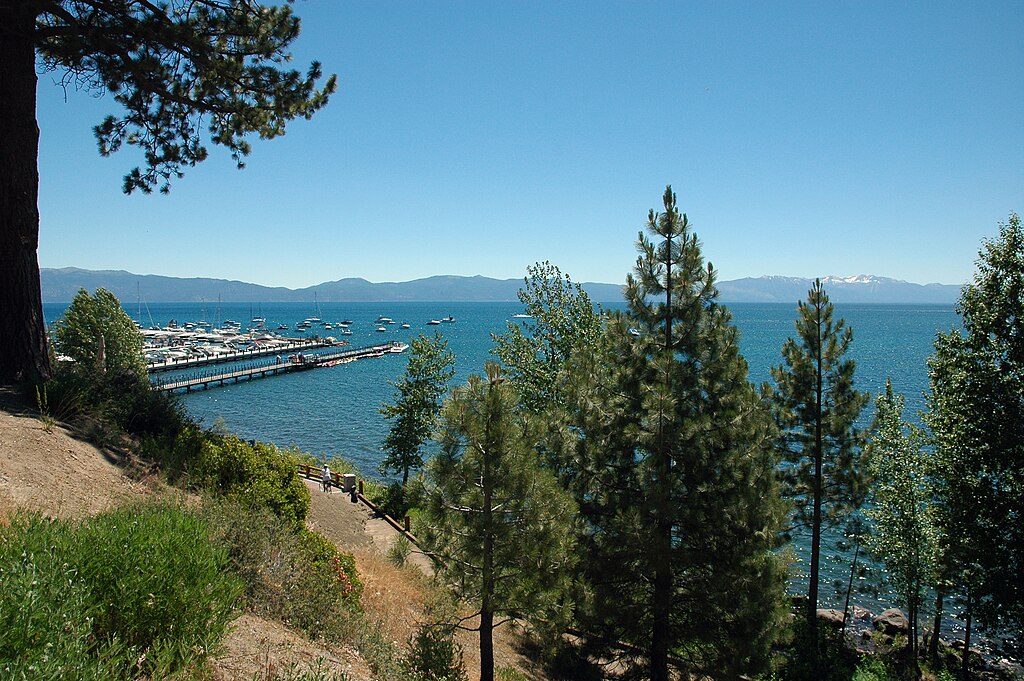
Lake Tahoe’s exceptional geography sets it apart from nearly every other fishing destination in North America. Sitting at 6,225 feet above sea level, it ranks as the largest alpine lake in North America and the second-deepest lake in the United States, reaching depths of 1,645 feet. This immense volume of water maintains a consistently cool temperature even during summer months, creating ideal conditions for cold-water fish species throughout the year.
The surrounding Sierra Nevada mountains not only provide a breathtaking backdrop but also shelter the lake from extreme weather conditions, allowing for extended fishing and camping seasons compared to many other alpine destinations. The remarkable clarity of Tahoe’s waters, visible to depths of over 70 feet in some areas, offers anglers a unique fishing experience where they can spot fish from above before casting.
Fish Species Diversity and Population Health
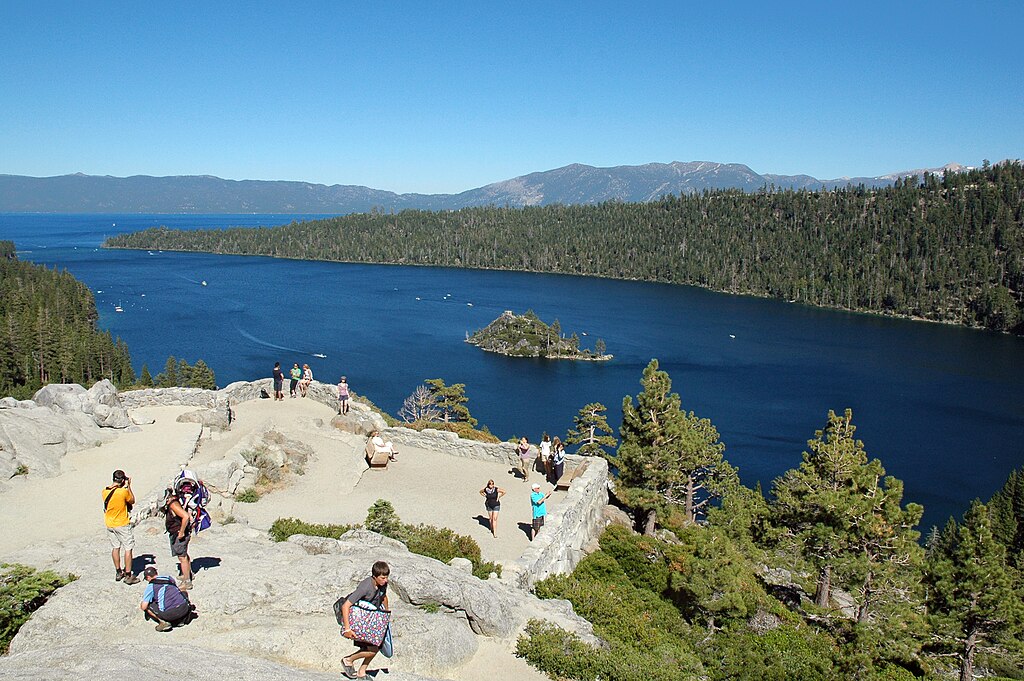
Lake Tahoe boasts an impressive variety of fish species that cater to anglers of all preferences and skill levels. The lake is home to Mackinaw (lake trout), brown trout, rainbow trout, Kokanee salmon, and smallmouth bass among others, providing multiple target species throughout the year. Conservation efforts carefully maintain the health of these populations through conservation efforts and stocking programs managed by both California and Nevada fish and wildlife departments.
Notably, Mackinaw reaching 20+ pounds are caught with some regularity, offering trophy fishing opportunities that rival specialized destinations. The lake’s varied underwater topography, including deep trenches, underwater shelves, and shallow coves, creates diverse habitats that support these different species, allowing anglers to target their preferred catch without traveling to multiple locations.
Camping Infrastructure and Accessibility
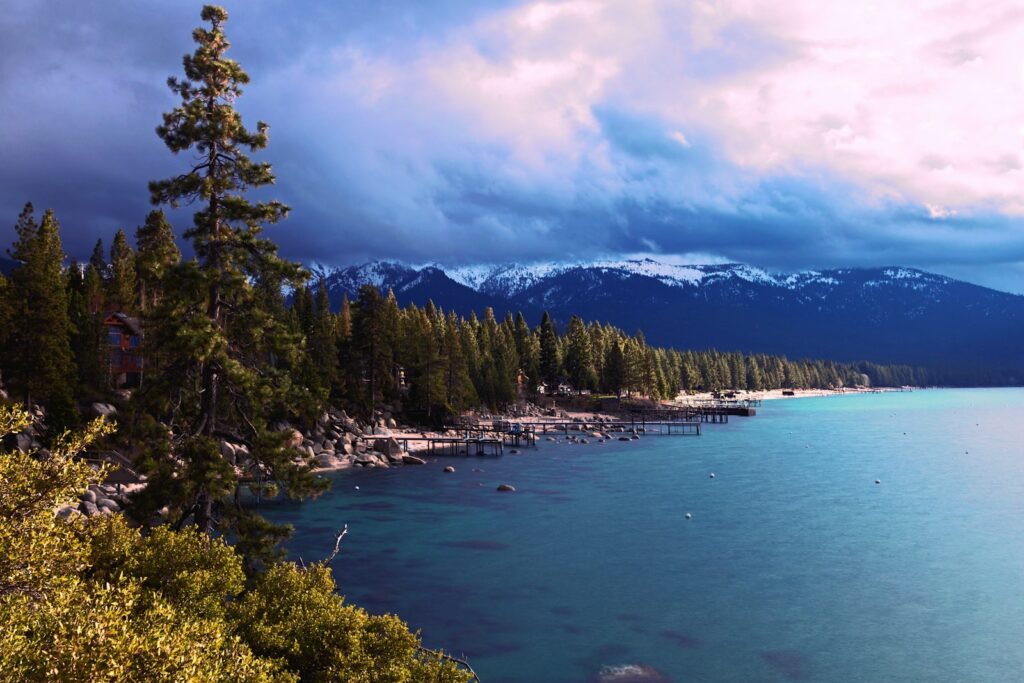
The camping infrastructure surrounding Lake Tahoe is exceptional, with options ranging from primitive backcountry sites to full-service campgrounds with modern amenities. Over a dozen of established campgrounds operated by various agencies ring around the lake. This includes the U.S. Forest Service, California and Nevada State Parks, and private entities, offering more than 800 individual campsites in total. Most campgrounds offer direct lake access or are conveniently situated within a short walk or drive from prime fishing locations, creating ideal base camps for anglers.
The region’s well-maintained road system makes Tahoe accessible to all types of vehicles, from motorcycles to large RVs, unlike some remote fishing destinations that require specialized transportation. Additionally, many campgrounds offer extended seasons, with some remaining open year-round, allowing for multi-season fishing trips that would be impossible at higher-elevation or more northern locations.
Year-Round Fishing Opportunities
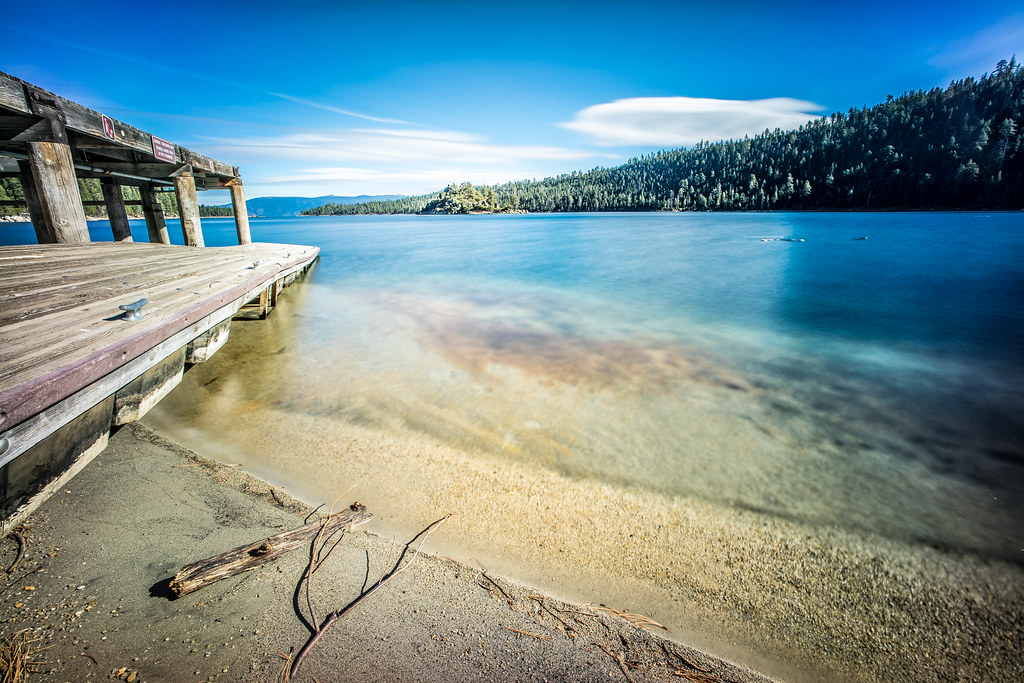
One of Lake Tahoe’s strongest arguments for being the ultimate camp-and-fish destination is its exceptional year-round fishing calendar.
Spring offers excellent shore fishing for rainbow and brown trout as they move into shallow waters. Summer brings peak fishing for Kokanee salmon and smallmouth bass, while also being the prime time for comfortable camping throughout the basin. Fall presents the opportunity for trophy Mackinaw fishing as these lake trout move to more accessible depths before winter sets in. Even winter doesn’t stop the action, as ice-free waters allow for year-round fishing, with many anglers enjoying productive days catching Mackinaw from boats even amid snowy surroundings.
This four-season availability is a rare feature among premier fishing lakes, particularly those at high elevations, giving Tahoe a significant advantage over destinations with limited seasonal windows.
Fishing Regulations and Limitations
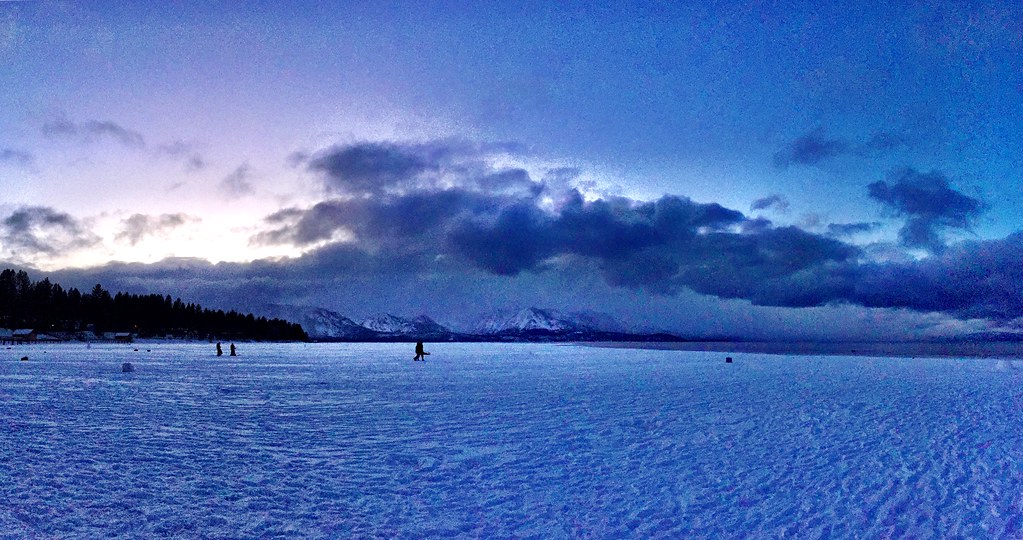
Navigating Lake Tahoe’s fishing regulations requires some attention, as the lake spans two states with different licensing requirements and regulations. Anglers must possess either a California or Nevada fishing license depending on which state’s waters they’re fishing, though special regulations do allow license holders from either state to fish the entire lake on certain days. Catch limits are conservative compared to some other fishing destinations, with strict regulations on certain species like Lahontan cutthroat trout, which are catch-and-release only.
The lake also has specific gear restrictions in certain areas, particularly during spawning seasons, which can limit techniques available to anglers. These conservation-minded regulations, while sometimes creating complexity, have helped maintain healthy fish populations and trophy potential, ultimately benefiting serious anglers seeking quality over quantity.
The Challenge of Fishing Lake Tahoe
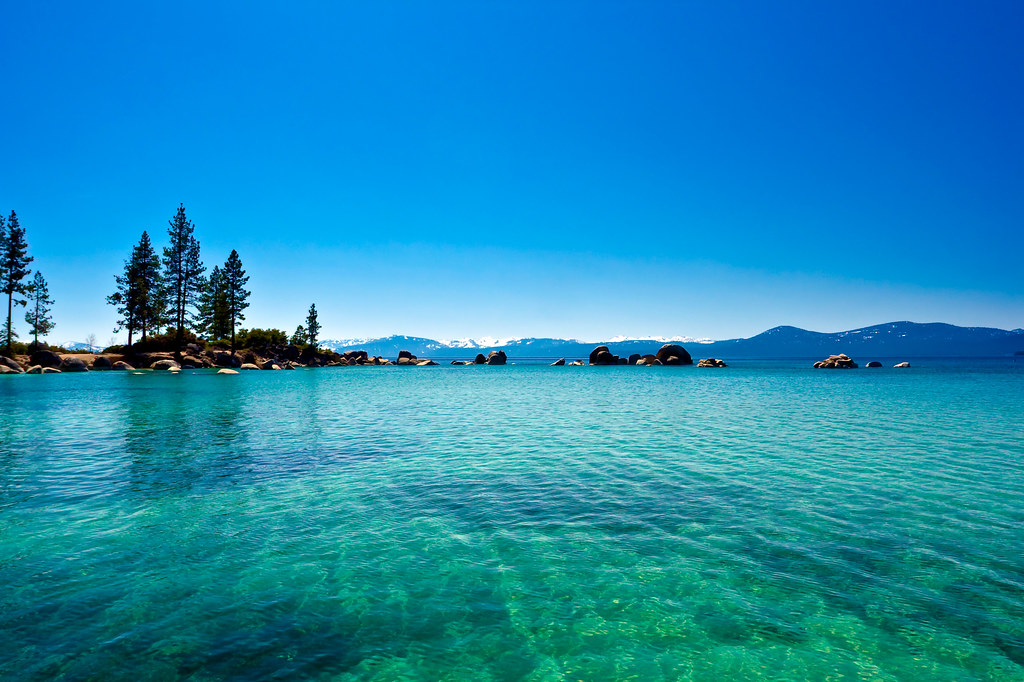
Lake Tahoe presents unique challenges that can test even experienced anglers, which some consider part of its appeal while others view as a drawback. The lake’s immense size (22 miles long and 12 miles wide) and extraordinary depth make locating fish more difficult than in smaller bodies of water, often requiring specialized equipment like downriggers and fish finders.
Water clarity, while visually stunning, can make fish more line-shy and require more finesse and lighter tackle than many anglers are accustomed to using. Seasonal weather patterns, including sudden mountain storms and strong afternoon winds, can create dangerous conditions that limit fishing windows, particularly for those in smaller watercraft.
These challenges mean that anglers may experience slower days than at some “put-and-take” stocked lakes, but the reward of mastering Tahoe’s conditions often results in more satisfying and memorable catches.
Comparing Lake Tahoe to Other Fishing Destinations
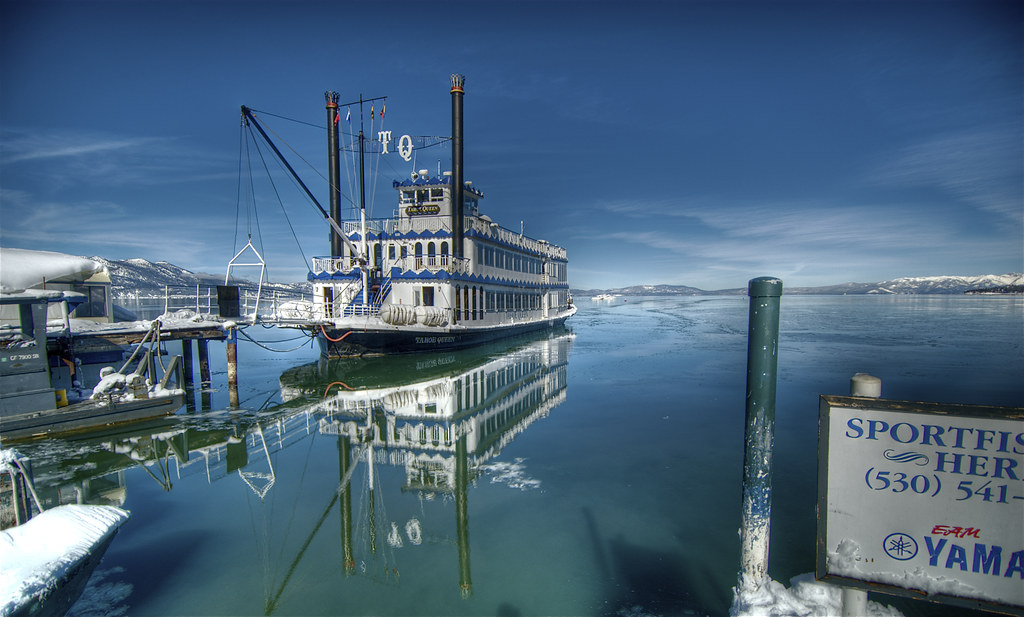
When evaluating Lake Tahoe against other premier fishing destinations, several comparative factors emerge. Unlike specialized destinations like Alaska’s salmon rivers or Florida’s bass lakes, Tahoe offers greater species diversity but potentially smaller average catch rates for any single species. Compared to other large lakes like Michigan’s Great Lakes or Minnesota’s Lake of the Woods, Tahoe provides more comfortable camping conditions through much of the year due to its milder climate and lower humidity.
The lake lacks the remote wilderness feel of Canada’s fly-in destinations but compensates with substantially better accessibility and amenities that accommodate families and anglers of all experience levels. Perhaps most significantly, few other destinations combine Tahoe’s caliber of fishing with its extraordinary natural beauty and extensive recreational alternatives, making it uniquely versatile for multi-activity trips.
Cost Considerations for Tahoe Fishing Trips
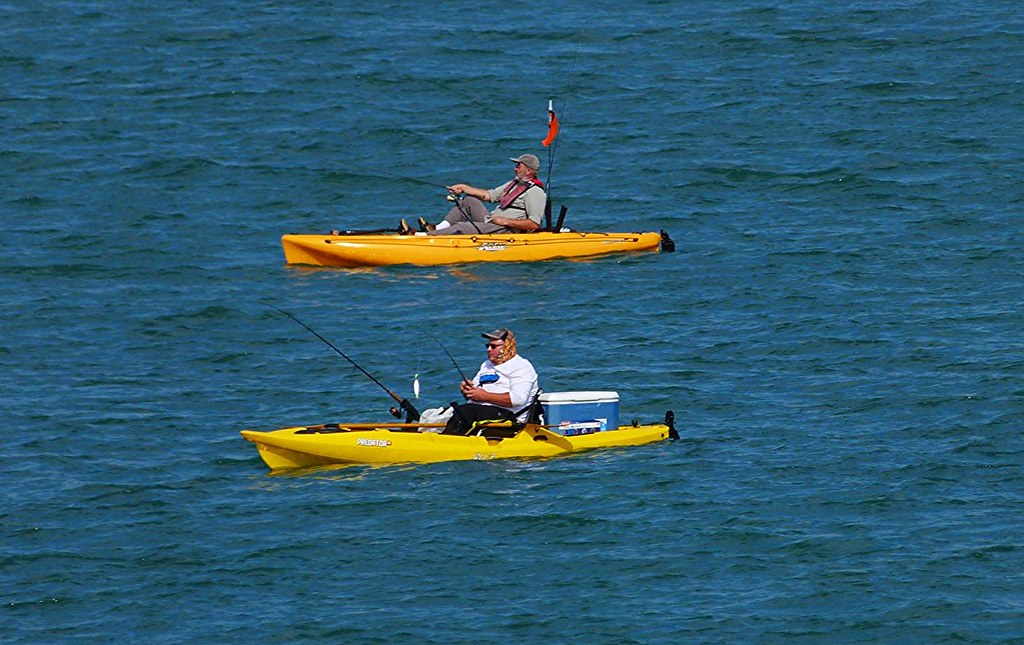
The financial aspect of a Lake Tahoe fishing trip presents both advantages and challenges compared to other destinations.
Camping remains relatively affordable, with public campground fees typically ranging from $25 to $45 per night, substantially less expensive than area hotels or vacation rentals.
Fishing licenses are moderately priced compared to other states, though the potential need for two licenses (California and Nevada) can increase costs for anglers planning to fish both sides of the lake extensively.
Guided fishing trips, ranging from $400 to $800 for half-day excursions, align with industry standards but represent a significant investment for budget-conscious travelers.
The biggest cost consideration may be the general expense level in the Tahoe Basin, where fuel, food, and supplies typically cost more than in less tourism-focused areas, particularly during peak summer months when demand drives prices higher across the region.
The Impact of Seasons on the Tahoe Experience
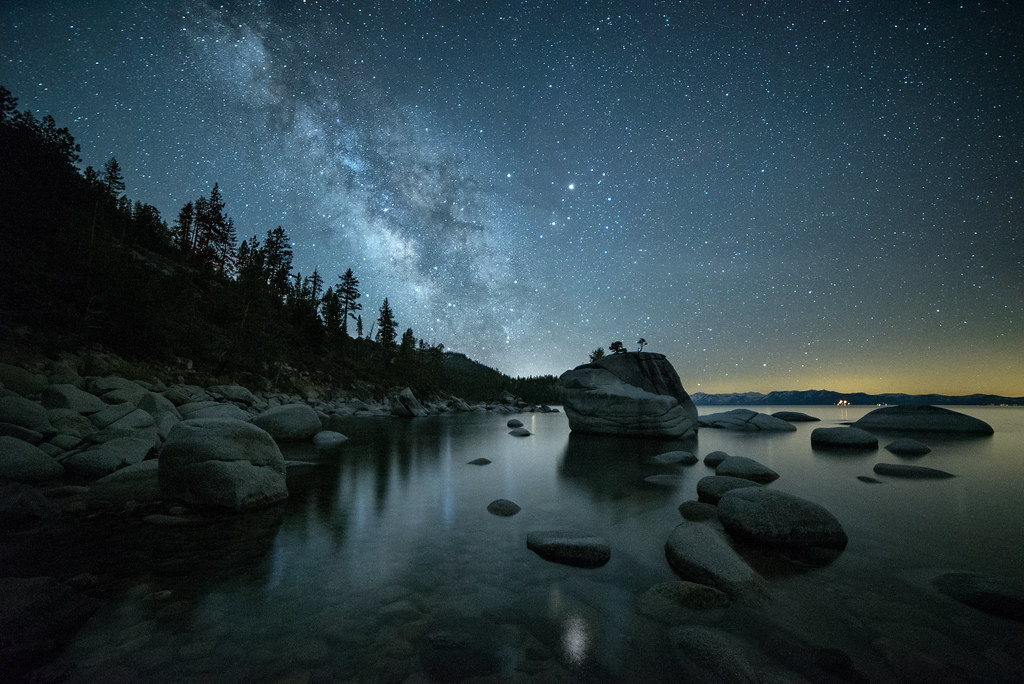
The seasonal variations at Lake Tahoe dramatically alter the camping and fishing experience, requiring visitors to carefully time their trips based on personal preferences.
Summer (June-August) offers warm days perfect for camping but brings heavy tourist crowds that can impact both campground availability and fishing pressure, particularly on weekends.
Fall (September-October) represents a sweet spot for many anglers, with decreased crowds, comfortable temperatures, and active feeding patterns among the lake’s trout species as they prepare for winter.
Winter fishing remains productive, especially for Mackinaw, but camping becomes limited to a few year-round facilities or requires winter camping equipment and experience.
Spring brings variable conditions, with some years offering early access to campgrounds while others see lingering snow; however, this season often provides excellent fishing as trout become more active in warming shallow waters, particularly on the lake’s north shore.
Beyond Fishing: Recreational Diversity
Lake Tahoe’s status as a world-class recreational destination extends far beyond its fishing opportunities, providing camper-anglers with exceptional activity diversity. Miles of hiking and mountain biking trails surround the lake, ranging from easy lakeside paths to challenging mountain ascents, offering perfect alternatives when fishing conditions are suboptimal.
Water sports enthusiasts can enjoy kayaking, paddleboarding, and swimming in the crystal-clear waters, with equipment rentals widely available throughout the basin. During winter months, world-class skiing and snowboarding at over a dozen nearby resorts provide complementary activities to winter fishing excursions. This recreational diversity distinguishes Tahoe from more fishing-focused destinations, making it particularly appealing for family trips or groups with varied interests, as non-anglers have countless options to enjoy while others fish.
Environmental Concerns and Fishing Sustainability

Lake Tahoe faces significant environmental challenges that directly impact its fishing quality and long-term sustainability as a premier angling destination. Invasive species, particularly Eurasian watermilfoil and Asian clams, have altered some shoreline habitats and impacted native fish populations, despite aggressive management efforts.
Climate change presents another threat, with warming water temperatures potentially affecting the cold-water species that dominate Tahoe’s fishing scene, particularly in shallow areas during summer months. Increasing visitation has raised concerns about fishing pressure, though strict catch limits and active management have thus far maintained healthy populations.
Conservation organizations and government agencies work collaboratively on preservation efforts, including mandatory boat inspections to prevent new invasive species introductions and habitat restoration projects that benefit native fish spawning grounds, helping ensure that Tahoe’s fishing opportunities remain viable for future generations.
Accommodating Different Angling Styles

Lake Tahoe accommodates virtually every fishing style, making it uniquely versatile among premier fishing destinations.
Shore anglers find abundant access points around the lake’s 72-mile shoreline, with particularly productive areas at public beaches, state parks, and stream inlets where catching rainbow and brown trout is common year-round.
Boat fishing opens up the lake’s full potential, with rental options ranging from simple fishing boats to fully-equipped fishing charters with professional guides who specialize in targeting trophy Mackinaw in deep waters.
Fly fishing enthusiasts enjoy both the lake itself for larger trout and the numerous tributary streams like the Upper Truckee River and Blackwood Creek, which offer classic mountain stream experiences for native and stocked trout.
Even specialized techniques like trolling, jigging, and drift fishing have their place at Tahoe, with different approaches proving effective as conditions and seasons change throughout the year.
The Verdict: Is Tahoe Truly the Best?
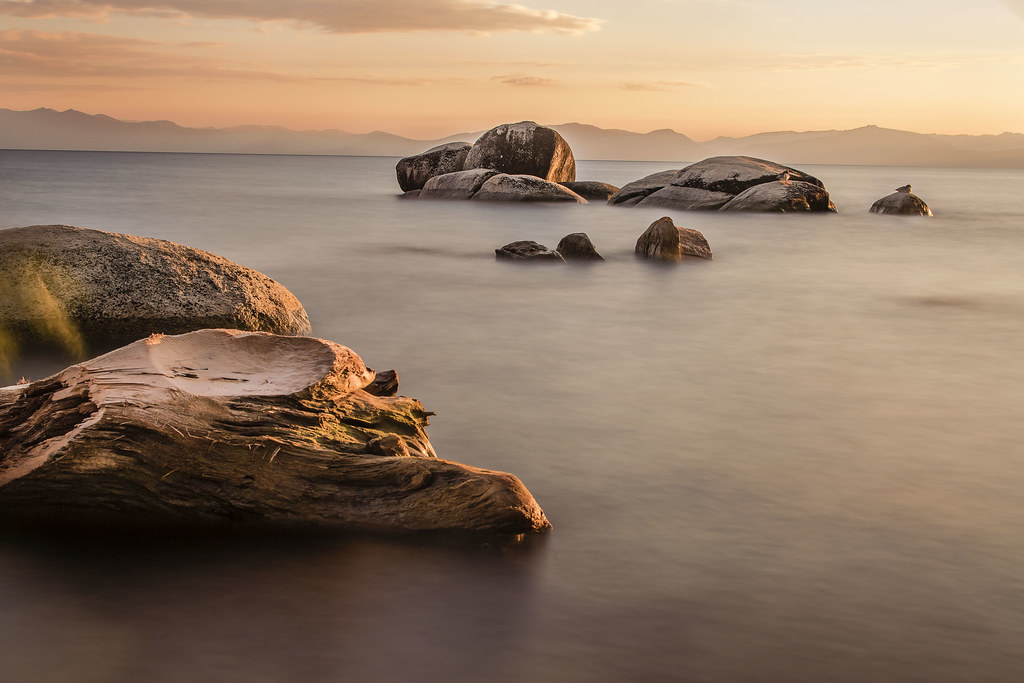
The question of whether Lake Tahoe stands as the definitive best camp-and-fish destination depends largely on an angler’s specific priorities and expectations. For those seeking the highest possible catch rates or the absolute largest specimens of a particular species, specialized destinations like Alaska for salmon or Florida for largemouth bass might rank higher on pure fishing metrics.
However, for anglers valuing the complete outdoor experience—combining quality fishing opportunities with extraordinary natural beauty, excellent camping infrastructure, recreational diversity, and accessibility—Lake Tahoe makes an exceptionally strong case for the top position. T
he lake’s year-round fishing calendar, multi-species opportunities, and ability to accommodate anglers from beginners to experts further strengthen its claim.
Perhaps most compelling is Tahoe’s unique versatility: few if any destinations can match its ability to satisfy the pure fishing enthusiast while simultaneously delighting non-fishing companions, making it a standout choice for family trips or mixed-interest groups.
Conclusion
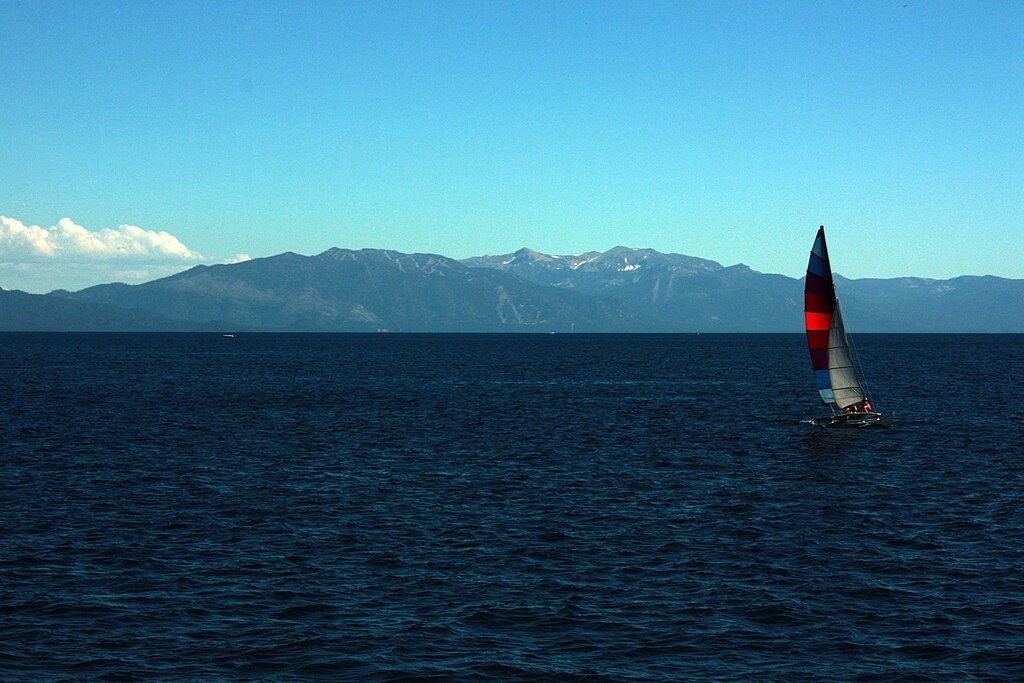
In conclusion, while declaring any destination the “best” inevitably involves subjective judgment, Lake Tahoe’s remarkable combination of fishing quality, species diversity, camping infrastructure, accessibility, and natural splendor places it among the elite camp-and-fish destinations in North America. Its ability to provide memorable fishing experiences across all seasons, accommodate various angling styles, and offer abundant recreational alternatives creates a uniquely versatile destination that few others can match.
Though Tahoe presents certain challenges—from complex regulations to fishing difficulty and higher costs—these obstacles are generally outweighed by the exceptional quality of the overall experience. For anglers seeking not just fishing success but a complete outdoor experience in a setting of unparalleled beauty, Lake Tahoe deserves serious consideration as North America’s premier camp-and-fish destination, especially for those planning trips with family members or friends who may have interests beyond fishing alone.


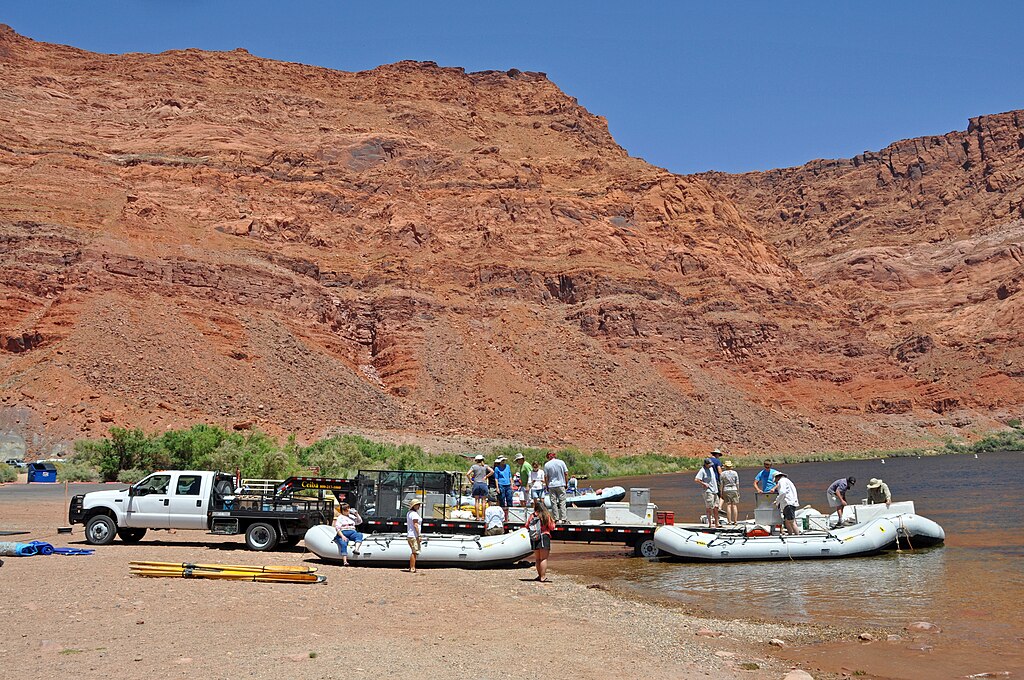











Post Comment